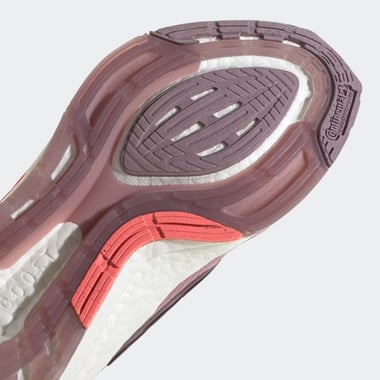adidas, a global leader in sportswear, shoes, clothing and accessories, was eager to provide women runners with a shoe specifically tailored to the unique shapes and needs of womens’ feet. To help launch Ultraboost 22, the new model of its Ultraboost line for women, adidas wanted to tap into women-specific insights to develop a model uniquely designed to deliver comfort and performance for women runners. They found inspiration and data in Volumental’s scientific paper, published in Nature.
The Ultraboost line has been at the forefront of performance running since its first iteration appeared in 2015. The Ultraboost 22 delivers supreme energy return technology, combined with a refined design for ultimate comfort. It marks the biggest update to the Ultraboost line-up thus far. This launch is adidas’ latest step in a long-term commitment to offer the best product to all women through improvements that support the needs of a diverse community of women.
Insights Fuels Development
An all-women team of designers and product developers worked closely with the adidas running community and testers to create the new model. As part of their research and development efforts, the team tapped into women-specific footwear insights using the study that was based on 1.2 million foot scans, conducted and analyzed by footwear and technology researchers Jurca, Žabkar & Džerosk in 2019. The highly informative study was led by Ales Jurca, VP of Research at Volumental, the worldwide leader in 3D foot scanning technology.
Volumental uses AI, digital imaging and machine learning to scan shoppers’ feet and provide the most accurate footwear fitting experience for consumers. Volumental’s innovative FitTech platform powered by an AI-driven Fit Engine™, is used by hundreds of retailers and brands globally. The scanner takes precise measurements of a shopper’s feet in less than five seconds, based on a full 3D scan of both feet. The system then creates a profile so that store associates can match shoe options with the precise dimensions of a shopper’s feet to deliver an ideal fit.
Women Runners Built Differently
Using the study as a foundation, adidas’ design team identified key differences among women runners in terms of instep height, heel anatomy and gait cycle trends. The design team then reengineered and refined the Ultraboost last to better reflect the dimensions and structure of the female foot.
The Ultraboost 22’s new last, which owes its shape to the signature S-curve of the UB21 last, was fine tuned to create a narrower heel pocket, shallower forefoot profile and lower instep area. The new model’s newly refined outsole is designed to help female runners put the risks of overpronation in the rear-view mirror.

Ultraboost 22 Features
Here are more details on the various features that adidas’ design and product development team incorporated into the newly launched Ultraboost 22 model:
-
Energy Return – the new upper and LEP torsion system combine with an iconic BOOST midsole for superior energy return, four percent more than the Ultraboost 21 model.
-
LEP – the adidas Linear Energy Push is an evolution of the torsion system which works in harmony with the new midsole and the newly designed outsole for a responsive ride.
-
PRIMEKNIT+ – the refined PRIMEKNIT+ forged zones are made with yarn containing 50 percent Parley Ocean Plastic for an adaptive fit.
-
360° Fit Improvement – the fit is based on a new last built on female anatomical insights. The design offers a narrower heel, lower instep and keeps a unique S-curve heel. The fit works with the heel counter so the Achilles tendon moves more freely.

Volumental Research and Development
Volumental’s Footwear Research & Development team aggregates and parses foot scan data, develops fit testing programs and delivers actionable insights and guidance for footwear brands across the globe. To receive more information, contact us.
